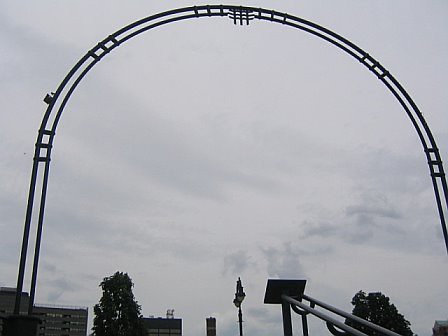FrankLloydMike
Active Member
- Joined
- Jun 24, 2010
- Messages
- 514
- Reaction score
- 0
I have no idea. We got lost several times and also tried to find the mall. Is this en route to the mall? It may have been another time we were down there looking for my wife's prom dress, too. I can't remember.
It is kind of on the way from downtown to the mall, depending on how you get there. Your wife's prom dress--is she from Manchester?
One more thing: if I recall correctly, the North End is Burlington’s densest neighborhood, which is in large part why the average density of Burlington trumps both Portland’s and Manchester’s. As a student, I didn’t spend much time there (essentially, the local ‘hood).
I think I've also heard/read somewhere that the North End is Burlington's densest neighborhood. It also goes to show how both population density and overall population is misleading.
Manchester has about 5,000 more residents than Cambridge, but has 6.5 square miles of land compared to Manchester's 33. There are only a few neighborhoods in Manchester that approach Cambridge's overall 16,422 people-per-square-mile density. Of course, Manchester's density of 3,320 is misleading because so much of the outlying areas of the city (especially the extreme northwest and much of the eastern edge) is largely undeveloped.
At roughly a third the size of Manchester in terms of population and land area, Burlington's population density edges out Manchester's at 3,682. Anyone who has visited Burlington's North End and Manchester's West Side or neighborhoods just east of downtown, though, I think would agree that Manchester is considerably denser. Since Burlington contains very little undeveloped land (except for that weird area just north of the North End), its population density looks artificially high. Actually, it's probably completely accurate, whereas Manchester's looks artificially low.
That’s cool Bedford is on board with smart planning, and I like the planners’ response “that’s the point.” Really, what we see today, is that the affluent neighborhoods are embracing urbanism and the middle class and impoverished neighborhoods are sorely lacking a huge amenity—walkability, keeping them fat and displaced.
It's very cool, and frankly surprisingly progressive for a town known in the area for its conservative politics and elitism. But it sounds like it's part of a larger trend like you mentioned. I really liked the planners' response, as well, but was a little discouraged by a couple board members who were reluctant to work regionally for fear that Bedford wouldn't be so "special."







